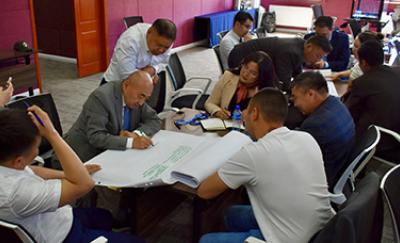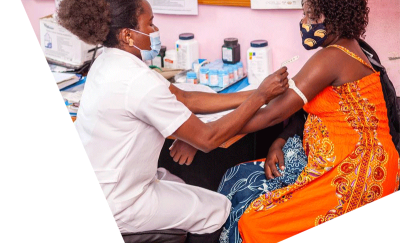7 Ways to Build Authentic Intersectional Leadership in Global Development


After years of focusing on “gender mainstreaming,” “intersectionality” is a concept that is now accepted as part of global development work. There is broad recognition that exclusion and marginalization are rooted not just in gender differences but in race, ethnicity, class, ability, sexual identity, religion, and other categories of social identities. When promoting social change, practitioners now carefully consider how multiple identities cut across each other to produce disadvantages for particular individuals and groups in society. For example, the focus used to be on gender inequality between men and women, but that has evolved. Practitioners now consider whether they belong to different ethnic groups, whether they are urban or rural dwellers, and so on, and shape interventions accordingly. However, to do this work credibly as development practitioners requires applying intersectionality principles beyond programming. It requires an awareness of our identities and a reflection on our experiences with privilege, oppression, and power.
To apply a truly authentic intersectional approach in global development work, we propose the following, both within our teams and across our programs and projects:
1. Examine your positionality and practice self-reflection. To do the work authentically, organizations—starting with their leadership teams—must go through a process of self-reflection or deliberately paying attention to their backgrounds and behaviors and considering how they influence decision-making. Before we can tackle issues of inequality in our work, we must first critically examine how we view the world, as that is what grounds us, guides us, and defines who we are and what we do. In 2022, Abt carried out a “Reflecting Inward” Assessment and Learning Program, which looked squarely at our internal culture, policies, and practices. Among other things, it involved an expansion of mandatory staff training covering ableism, casteism, colorism, and transgender and gender-diverse identities.
2. Fully commit to equity, diversity, inclusion, and accessibility (EDIA) within your own teams. To do the work authentically in our projects, we should practice what we preach within our own teams. This involves creating inclusive workplace policies and ensuring implementation and follow-through, offering opportunities for active employee engagement, providing continuous training and mentoring across the organization, championing diversity and accessibility, and tracking progress. This work requires a budget, a strategy, dedicated staffing, and an environment where employees feel safe to provide feedback. Internal accountability, external audits such as the Racial Equity Index and EDGE, and well-resourced employee networking groups (ENGs) with direct access to management help ensure accountability.
3. Shift traditional power structures and reduce hierarchies. Hierarchies often prioritize specific individuals or groups based on traditional power structures such as race, ethnicity, gender, social status, and education. This can create barriers for individuals from underrepresented backgrounds or identities, making it harder for them to be heard or succeed in an organization. Reducing hierarchies through flatter working structures enables more employees to provide direction and leadership (or enjoy greater ownership of their work if paired with committed leadership and commitment to upskilling) and provides an opportunity for existing senior leaders to give space to others.
4. Value, learn from, and utilize lived experience. Take—or create—opportunities to learn from those who are generally not considered “experts” but may have gained knowledge through direct, first-hand involvement in everyday events. Their lived experiences with social, health, public health, or other issues give them unique insights and a profound understanding that uniquely positions them to improve systems, strategies, research, policies, practices, and programs to address those issues.


5. Collaborate and share power. Locally led development—or shifting power closest to those we aim to serve—should be the ultimate goal in global development. Governments are seeing a shift in the way they do aid. USAID announced a localization policy with aggressive targets in 2021 (i.e., 25 percent of funding to local partners in four years) and a policy framework in 2023. DFAT’s new development policy highlights the urgent need for locally led development, and the FCDO’s international development strategy commits to “putting people first” in its approach. Development actors, including the biggest international NGOs, are taking conscious steps to decolonize aid. We can do our part in how we staff our teams, through our procurement policies, and by more closely collaborating with our local partners in all stages of the project cycle. For example, in the DFAT-funded PNG (Papua New Guinea) Women Lead, Abt has institutionalized strategies for localizing aid by co-creating critical aspects of the program with PNG women leaders, building local capacity into our grant-making process, and working hand in hand with civil society and government in program delivery. In our FCDO-funded Good Governance Technical Assistance Facility, Ukrainian women and men are at the forefront of assisting the country’s economic and social recovery in close partnership with the Government of Ukraine.
6. Change the narrative. When we share “best practices,” we must recognize that Western practices do not always apply or work best. When we design and deliver training, modules must be tailored to the local context and, if possible, local providers who know the local context best must be used.
7. Re-imagine your role. Ultimately, the goal should be to transition from service delivery to facilitation. We are looking for ways to progress from a management and control relationship with those people most affected by the work that we do to ensuring that they are leading efforts to transform power relations in their countries and communities. Working with people with lived experiences, building a genuinely equal relationship between and within teams, and approaching our work with humility are vital to this ongoing shift in our work.
Ultimately, committing to an intersectional approach in our work and within our own teams requires a power shift for leadership, staff, and partners to look inwards at how we respect and lift the voices, resources, and access of those with whom we work. Our task now is to sit in any discomfort when recognizing and acknowledging privilege. We need to commit to a process of change that builds diversity, justice, and belonging both within our development teams and between and across government, civil, and academic partnerships, and we must cede leadership and direction to those most affected by the work we do.
Learn more about Abt’s equity work.
Learn about Abt’s EDGE certification.
Read More

Engaging Men in Gender-Based Violence Prevention
To observe the 16 Days of Activism Against GBV, Abt is convening a webinar on engaging men in GBV prevention.

Global Digital Health Forum (GDHF) 2024
Abt Global is sponsoring and presenting at the Global Digital Health Forum (GDHF) 2024.

Association for Public Policy Analysis & Management (APPAM) 2024 Fall Research Conference
Experts from Abt Global will be presenting at the Association for Public Policy Analysis & Management (APPAM) 2024 Fall Research Conference.

Uncovering Barriers in Employment to Expand Workforce Access
Racial bias can be present in any step of the employment process. That includes how jobs are advertised, applications are screened, tasks and work hours are assigned, mentoring is offered, compensation is set, and retention and promotion decisions are…

